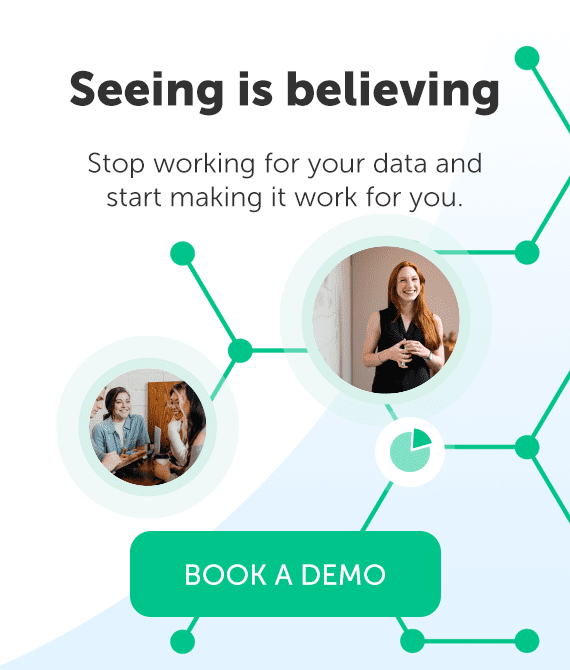For many law firms, legal CRM systems promise growth, stronger customer relationships, and smarter business development. Yet despite these ambitions, many still struggle to unlock their CRM’s full value. Misconceptions, data trust issues, and cultural barriers often stand in the way.
These challenges, and how to overcome them, were the focus of a recent webinar hosted by Introhive’s Legal Industry Director, Al Mercer and Omnilex Partner, Marcel Henri, featuring Valérie Courbier, CMO at Arsene Taxand, and Samuel Taylor, Head of Clients, Data & Digital Marketing at Kingsley Napley LLP, who shared their perspectives on what it really takes to turn CRM from a system of record into a driver of business growth.
That theme was set early, when Valérie remarked: “It’s not an IT tool. And marketing are not the owners. CRM is a business tool to help grow the organisation.”
With that in mind, here are some key takeaways from the discussion on how law firms can overcome common CRM challenges and unlock real business value.
Table of contents
CRM misconceptions: why adoption still fails
While legal CRM systems promise to drive growth and deepen client relationships, many law firms continue to struggle with adoption. A common challenge is data trust. As Sam noted, when lawyers encounter outdated or incomplete information, confidence in the system can quickly erode, even when CRM is simply visualising data from other sources within the firm. This lack of trust often leads to disengagement, with professionals defaulting back to manual processes or ignoring CRM altogether.
Another key barrier is relevance with lawyers wanting to know, “What’s in it for me?” If CRM doesn’t deliver immediate, actionable benefits like alerting fee earners when a key contact changes jobs or engagement levels drop, it’s likely to be seen as just another administrative task. For busy lawyers, that perception can be the difference between adoption and abandonment.
Sam highlighted the importance of thinking about how the firm can make CRM almost invisible for fee earners to use, emphasising that CRM needs to fit seamlessly into a lawyer’s daily workflow so that it impacts their day-to-day but without being seen as an ‘IT’ system. Tools that surface valuable insights directly in Outlook, for example, reduce friction and increase adoption. “Having that kind of ability to be almost using it without realising you’re using it, whether that’s through an Outlook system or integration… they’re not impacting on their day-to-day lives too much, but they get the benefit,” he explained.
Crucially, proof points matter. Lawyers are more likely to engage with CRM when they see tangible results; whether that’s better client conversations, new referrals, or measurable improvements in campaign performance. Demonstrating how CRM supports their business development efforts helps shift the perception from overhead to enabler.
Cultural barriers: the reluctance to share and see legal CRM systems as strategic
Beyond technical hurdles, deep-seated cultural attitudes are often the biggest barriers to CRM adoption in professional services. At firms like PwC, Baker McKenzie, and now Arsene Taxand, Valérie has seen how shifting mindsets around CRM can be more challenging than solving any technical hurdle.
One persistent challenge is how CRM is perceived within firms. It’s not always recognised as a business-critical asset that drives client development and growth. Instead, client information is often viewed as something personal to protect, which makes people hesitant to share it more broadly for the benefit of the firm.
Valérie argued that this reluctance to share information is ultimately counterproductive. Rather than weakening relationships, sharing client insights across the firm strengthens them, enabling broader support, better service, and reducing the risk of client loss when key individuals depart. Moving from an intuitive, relationship-holder model to a more structured, collaborative approach is essential for sustainable growth.
Similarly, shifting how firms think about data quality follows the same logic. Rather than treating it as the responsibility of Marketing or a central team, it should be a shared accountability across the organisation. Meaningful CRM data is less about perfection and more about relevance; showing which contacts are engaging, which campaigns are working, and where opportunities are emerging.
Connecting CRM to concrete business results is essential for demonstrating its value. “You have to build dashboards to show the pipeline and track how a lead evolves. For example, a new opportunity coming from a marketing action, an event, or a partner initiative and how this lead has been converted into business,” Valérie explained. “It’s something you can do if your process and sales cycle are fully integrated into the CRM.”
ERM: making legal CRM systems work in the background
To address ongoing challenges with data trust and user reluctance, the conversation also highlighted Enterprise Relationship Management (ERM), a layer that helps make CRM more dynamic, less intrusive, and better aligned with how lawyers actually work.
Al brought a valuable perspective, drawing on his years as a BD director inside a law firm before joining Introhive. Back then, his primary focus was gaining visibility into the firm’s relationships across its various offices. He focused on questions like, “Who do we know?”, “Who has the connection?”, and “How strong is that relationship?” – all aimed at fostering internal collaboration. The objective was to identify the right partner, seek out a warm introduction, and gather useful context about who at the firm knew people at a given company. This helped assess the lay of the land, uncover potential opportunities to win new work, or simply deepen existing relationships with client retention in mind.
While those questions naturally raise the topic of whether a legal CRM system is needed, the real challenge lies in how CRM systems function. By design, a CRM is a system of record. However, people rarely take the time to actively create and update those records, creating a gap between the relationships a firm actually has and what the CRM reflects.
As Al put it, “They don’t want to stop what they’re doing to input contact information, let alone log into CRM to update details they already entered.” Over time, this leads to CRM systems that are outdated, incomplete, and ultimately not very useful in understanding how well we understand who knows who and how well, reducing them to little more than a flat system of record.

That’s where Al sees ERM adding a lot of real value. As he explained, “ERM really is the system of truth to overlay the system of record. ERM is dynamic. It can passively capture information, passively add it to CRM, and then passively keep that data up to date moving forward.”
This passive, automated approach lifts the burden from busy professionals. Rather than seeing CRM as yet another task, lawyers benefit from a tool that quietly works in the background, seamlessly capturing, enriching, and surfacing valuable relationship insights within their existing workflows, like email and calendars.
In Al’s view, this shift is essential to restoring trust in CRM. By ensuring data stays accurate and up to date without requiring manual input, CRM transforms from a static database into a living source of relationship intelligence that lawyers engage with effortlessly, often without even realising it.
Best practices: start small, build trust, and make CRM part of the routine
One common pitfall many firms face is trying to launch a fully integrated, feature-packed CRM from day one, which can overwhelm users and hinder adoption. A more effective approach is to start small and build value gradually, adding complexity only as the firm is ready.
For example, Sam shared that at Kingsley Napley, their CRM journey began with a single, focused objective: understanding who knows who. “We started with relationship data because that was the gap we knew was holding us back,” he explained. “Only once we had built confidence and value around that did we move into more advanced CRM capabilities.”
He also stressed the importance of meeting lawyers where they already work. By integrating CRM insights into familiar tools like Outlook, the firm avoided adding friction to already busy professionals. This approach made adoption feel natural, not forced.
Valérie echoed this point, emphasising that CRM needs to be embedded into the lawyers’ daily routines to succeed. Beyond technology, executive sponsorship is essential. CRM projects must be positioned from the start as strategic business initiatives, not just BD or marketing tools. When CRM is championed by the managing partner or leadership team, it sends a powerful message that client relationship management is a firm-wide priority.
Both speakers also encouraged firms to be realistic about their own size, culture, and digital maturity when selecting and implementing legal CRM systems. Valérie pointed out that all-in-one CRM platforms can be a good fit for smaller or mid-sized firms focused on simplicity and cost-efficiency. However, she cautioned that even in these cases, key integrations with data enrichment and relationship management tools are vital to keep CRM data fresh and valuable over time.
Final thoughts
For law firms, the value of legal CRM systems lies not in the technology itself, but in how effectively it supports client relationships, collaboration, and business development. Shifting CRM from a passive system of record to an active driver of growth requires a thoughtful, phased approach – one that prioritises ease of use, integrates into daily workflows, and has clear leadership support.
If you’re interested in seeing how Introhive helps firms get more from their legal CRM systems and turn relationship data into real business impact, request a demo. For more practical steps on building a CRM strategy that drives results, explore our Digital Transformation Guide.






